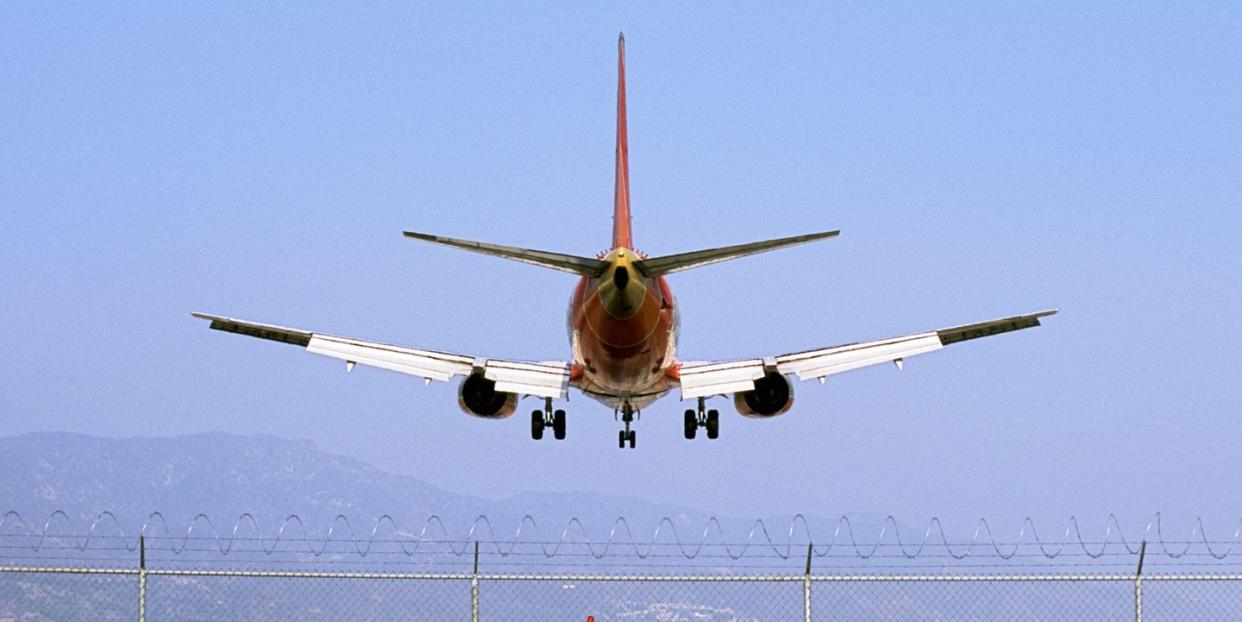82-Year-Old Cyclist Sues Airport, Says Jet Engine Gust Knocked Him Off Bike

An 82-year-old cyclist is suing a California airport over a bike crash that, he claims, was caused by a gust from a jet engine blast.
Ross Pepper said he was riding with a group by the San Luis Obispo County Regional Airport when the crash occurred, just as a plane was taking off.
Pepper’s lawyer said his client had to spend several weeks in the hospital after falling from his recumbent bike.
A little more than a year ago, Ross Pepper was riding his recumbent bike with a group of other cyclists in San Luis Obispo, California. Humming down Highway 227, a popular route out to the region’s wine country, they cruised by the small city’s regional airport. Just as the group passed, a plane picked up speed and prepared for liftoff.
That’s when things went awry. According to a complaint filed in the San Luis Obispo Superior Court, Pepper, then 81, believes the plane created a thrust from the engine blast so strong that it blew him off his bike and into oncoming traffic. He also alleges that seven or eight other riders were likewise knocked from their bikes, though Dustin Tardiff, Pepper’s attorney, said those riders will not join the lawsuit.
“As far as I know they were not significantly injured,” he said about the rest of the peloton.
His client, however, had a different experience. “I'll just say [Pepper’s injuries are] extremely extensive and it’s completely changed his life,” Tardiff said. He added that Pepper had to spend several weeks in the hospital and in outpatient rehab, before moving in with a relative because he couldn’t navigate the stairs in his own home. The formal complaint filed with the court doesn’t give many details, simply listing his injuries as “severe.”

Pepper is suing the San Luis Obispo County Regional Airport, the county itself, the California Department of Transportation, and the Federal Aviation Administration (FAA), arguing that these parties knew jet engines so close to a roadway could pose a danger to passersby, yet didn’t take proper safety measures. He’s asking for unspecified general damages, economic damages, and his legal fees to be covered.
“His paramount concern is that the issue be rectified,” Tardiff said. “He sees it as presenting an ongoing risk for the community.”
Whether Pepper’s case succeeds will hinge on many small details, according to Amy Johnson, a Tennessee-based attorney who specializes in bike cases. “I wonder how far away the edge of the runway was from the road,” she said. “I wonder whether there were prior incidents that put the airport on notice that the jet blast impacted people on the roadway, or whether this is an isolated incident.”
Few of these items are listed in the complaint. Furthermore, Johnson said, “In order to sue the FAA, you have to meet prerequisites, and follow the guidelines of the Federal Tort Claims Act.” This basically means that lawsuits against the federal government have a higher legal bar to clear than those against private citizens. For one thing, the injured party must file a claim, meeting certain criteria, with the given federal agency before a lawsuit can move forward.
In theory, though, this isn’t a completely bonkers case. Jet engines are indeed powerful and can create big gusts of wind, said Alex McHale, a military flight officer, trainer, and founder of Space Salvage Technologies: Orbital, a company working to remove space junk from the cosmos. Just like a cyclist propelled by a burrito, the blasts are caused by the expelling of hot exhaust gasses.
Mike Arman, a longtime pilot and FAA instructor, pointed to the Caribbean island of Saint Maarten, where one runway at the Princess Juliana International Airport is so close to a public beach that plane gawkers are regularly blown away. In fact, in 2017 a woman died when her head struck concrete as she was sent flying.
But Arman said he’s skeptical that something similar happened in this case. Using Google Maps, he deduced that the Saint Maarten runway is just 300 feet from the beach where tourists congregate. In San Luis Obispo, he said, “the absolute closest point on Highway 227 is 550 feet from the north corner of the east end of the runway, and is not lined up with the runway. If the airplane was lined up for departure on [the main runway], the distance from the back of the engines to Highway 227 is about 1,000 feet.”
The plane in the 2017 Saint Maarten incident was a 737-800, a commercial jet holding 189 passengers. A look at all incoming and outgoing San Luis Obispo flights shows that Embraer RJ175s and Canadair Regional Jet 700s, which both max out at about 80 passengers, are the two most common commercial planes at that airport. (Calls to the airport requesting flight logs were not returned.) However, a private or cargo plane could have also been on the runway the moment Pepper rode by. Tardiff did not know the exact model of plane in question, but did characterize it as a “medium-sized jet.”
So did a plane cause this crash? McHale said it’s technically possible. In court it will come down to exactly what type of plane was taking off, in what direction it was traveling, and the ambient wind speed. Both he and Arman are skeptical this will go Pepper’s way, though Johnson said she would need more info. “There are not enough facts alleged in the complaint to have an opinion on whether the airport should be liable,” she said.
Tardiff, meanwhile, said that Pepper isn’t looking for a huge payout. “Ross especially feels it’s a safety issue,” he said. “It could have been a lot more serious… It could very easily happen again.”
('You Might Also Like',)
